Deriving the Equation
Since Charge in a Magnetic Field Experiences a force
Let’s derive the equation for the force on a wire.
First, we need a measure for the amount of charge. We say:
Where:
is the number of charge carriers per volume. is the cross sectional area of the wire. is a certain length of the wire. is the charge per carrier
Then we use a couple of different equations:
Which gives us an equation for force from
Torque on Looped Wire
For a looped wire configured as below, there will be magnetic forces outwards from each wire. You can check this using the Right–Hand Rule.

For an axis moving along the direction of the first part of the wire, we can calculate the Torque:
Giving us an equation for the torque on a wire in a magnetic field.
Magnetic Field around a long current-carrying wire
We can use Ampere’s Law to find this equation:
Transclude of Ampere’s-Law#along-a-ap-physics-c--magnetism-and-current-carrying-wires-magnetic-field-around-a-long-current-carrying-wire-long-straight-current-carrying-wire
How can we calculate the magnetic field from multiple wires at a point
-
Calculate each wire’s magnetic field
on . -
Use the Right-hand Rule for Rotation to determine the direction of
on . (Excuse my poorly drawn hand) 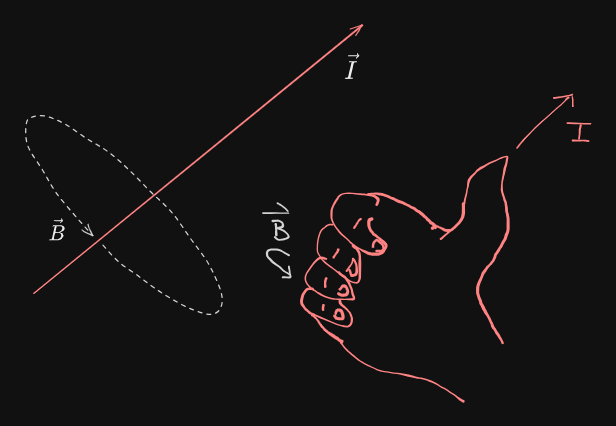
-
“add” the vector quantities and calculate the final magnitude and direction.
For example
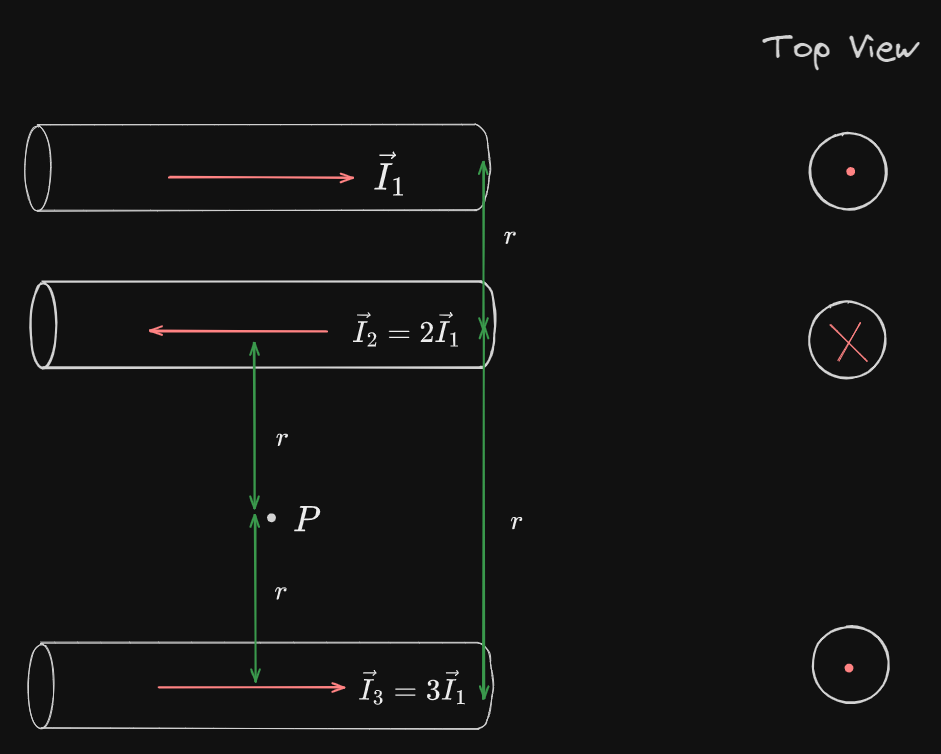
Answer

For the magnetic force from two parallel current carrying wires:
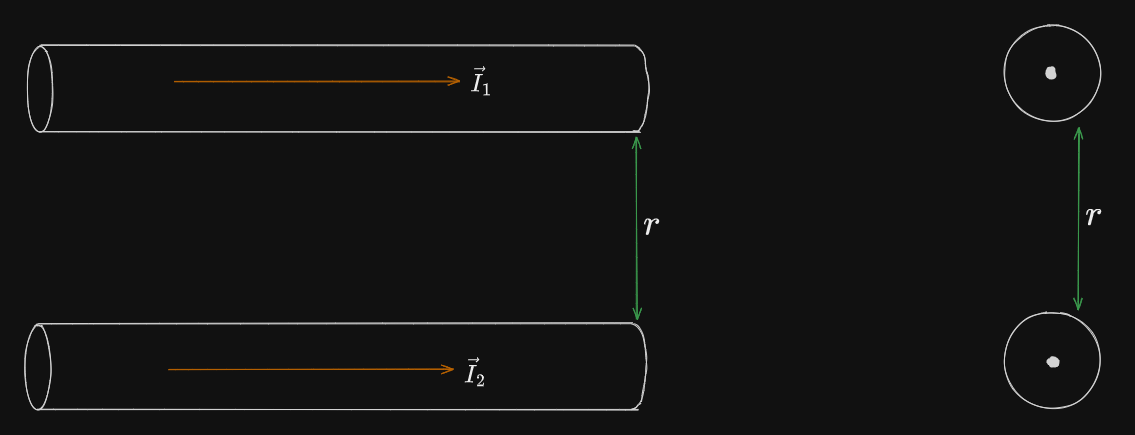
We use the rotational right hand rule and reason the magnetic field of each wire on the other:
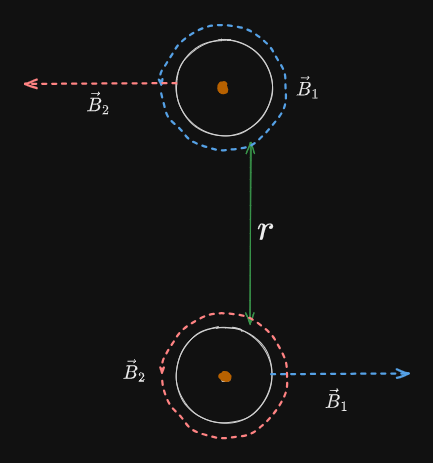 We then use the regular Right-hand Rule to reason the Magnetic Force:
We then use the regular Right-hand Rule to reason the Magnetic Force:
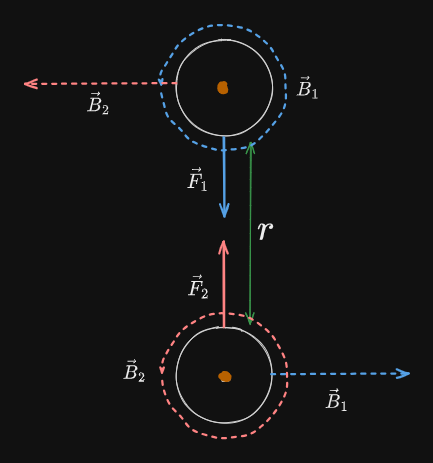
Then we calculate:
It makes sense that the magnetic forces of two wires on each other equal one another because of Newton’s Third Law: that every action has an equal an opposite reaction.
If the currents are moving in opposite directions:
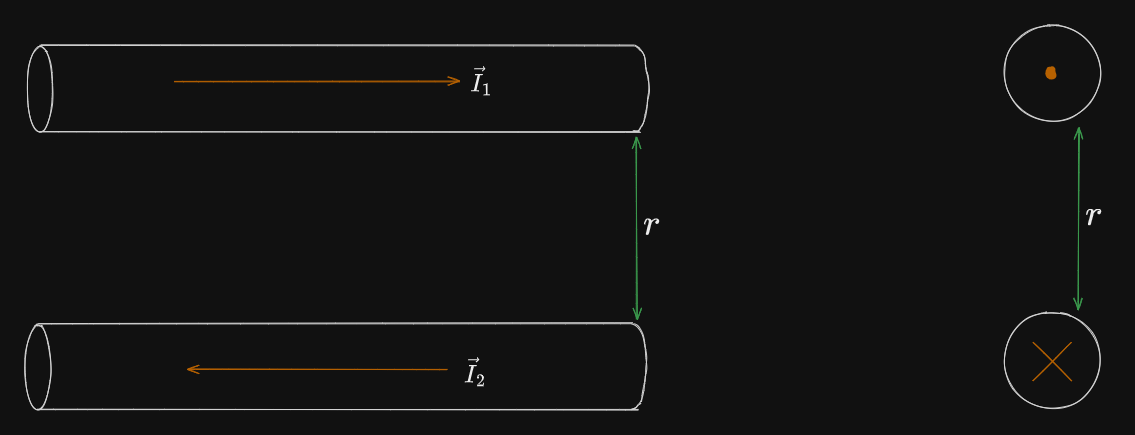
Then we use the same process:
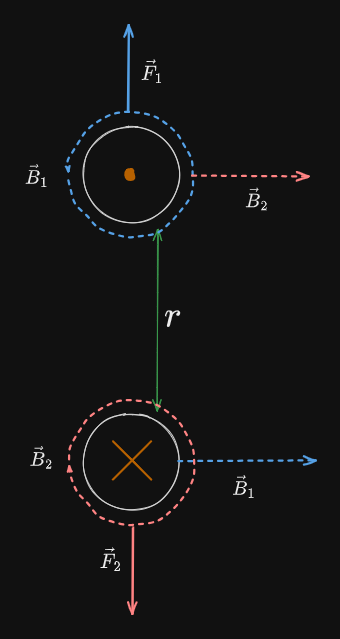
The force is the same:
This equation is also seen as the force per unit length:
Wire attract when current is in the same direction and repel when they are in opposite directions.